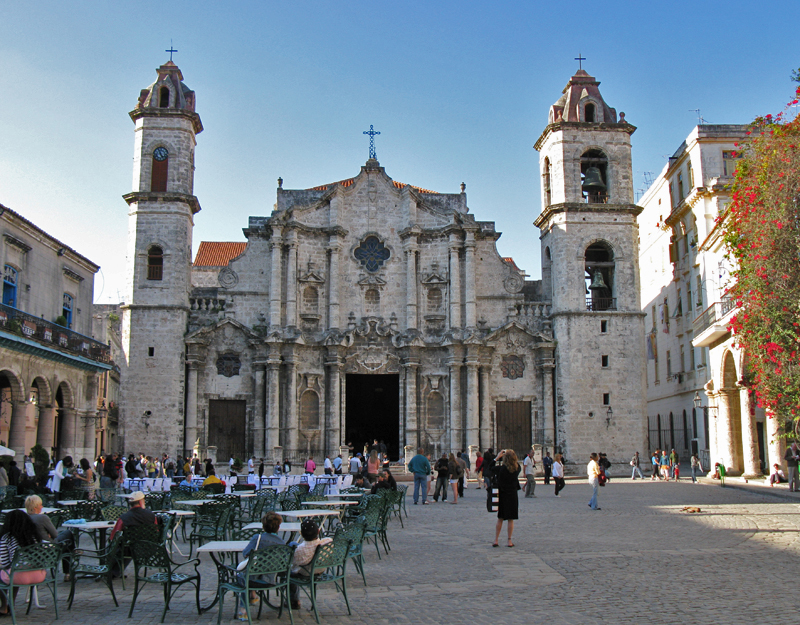Source: Photograph (2010) by WTL© on site in Old Havana.
Comments: The Catedral de San Cristóbal (Cathedral of Saint Christopher) is, naturally, on the Plaza de la Catedral. The façade is in late Spanish Baroque style. The edifice was begun in 1748 by the Jesuits, but, when this powerful religious order was expelled from all Spanish territories in 1767, the cathedral was finished by the Franciscans in 1777. Originally, the parish was called the Catedral de la Virgen María de la Inmaculada Concepción, but the name was changed in 1789 to its current name because, between 1789 and 1898 Cubans thought that the remains of Christopher (Cristóbal, in Spanish) were buried in the cathedral. Nowadays, only the cathedrals in Santo Domingo and Sevilla along with a Franciscan convent in Valladolid, Spain, think that that they house Columbus's remains.
Note 1: Cuba's great 20th century writer, Alejo Carpentier, said the façade we see here was "music turned into stone." Carpentier was both a musicologist and a novelist. Carpentier (1904-1980; Los pasos perdidos / The Lost Steps, 1953). However, the building's Neo-Classical interior is not as remarkable as the building's exterior.
Note 2: For photos of the cathedral's (interior) nave, see: => Havana #25a and => Havana #25b.
Note 3: In addition to the Cathedral, the buildings that surround this small Plaza are the Museum of Colonial Art (1720), the Palacio del Conde Lombillo (1746), the Palacio de los Marqueses de Aguas Claras (18th century).
Humanities topic and question: (A) Please reflect on Carpentier's description of "music turned into stone," apply what you see in this photo to what you know about stone in Latin American humanities. (B) The professor-photographer and author of this online textbook merely lists the buildings that surround the Plaza de la Catedral. It seems that the usual Spanish colonial approach to the core of their urban development plan was not followed in Havana; in other words, in what way is this Plaza different from the generality of the central plazas in Spain's Latin American colonial cities?

